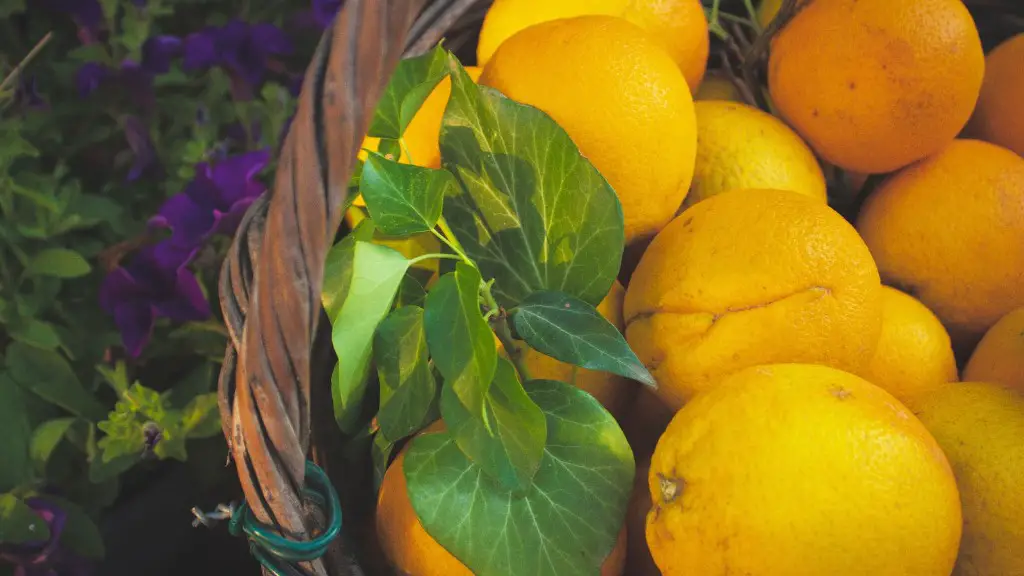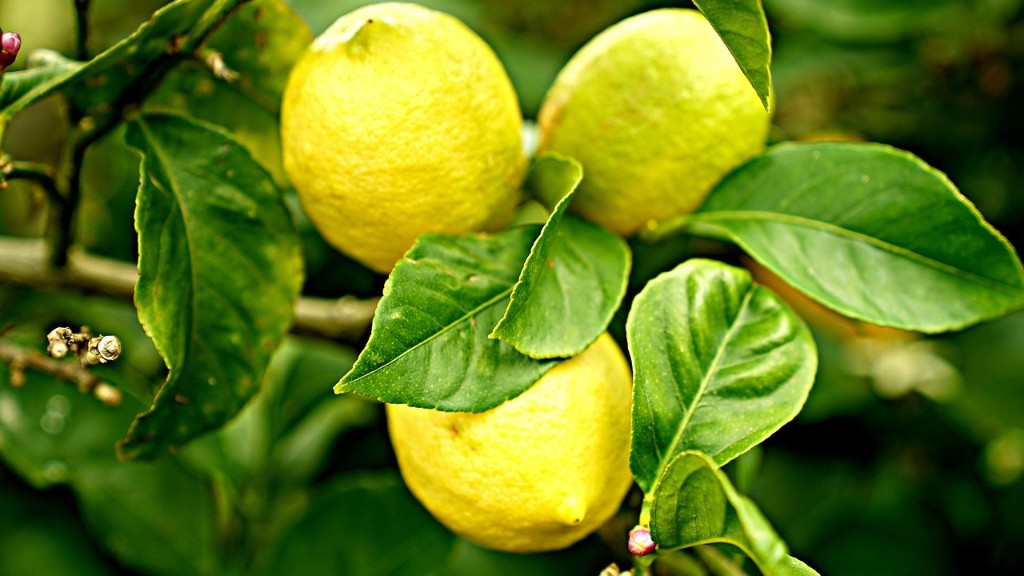If you’re looking to add potted meyer lemon trees to your greenery collection, there are important steps you should take to ensure they thrive. Meyer lemons, a cross between a lemon and an orange, are prized for their display and taste, so proper care is essential in maintaining them. Here are some tips on how to take care of a potted meyer lemon tree:
1. The first key step is to give your tree enough light. Place your tree near a sunny window, where it can receive plenty of indirect light. If the spot is too shady, the leaves will yellow and drop off, and there will be little to no growth. A spot that receives 6 hours of direct sunlight per day is ideal.
2. Make sure to water your tree consistently and evenly. Meyer lemons will require a lot of water when in high heat weather. Allow the topsoil to get lightly dry between watering sessions. When watering, it’s important to water from beneath the plant; water sitting on top of the leaves can cause fungal diseases or sunburned leaves.
3. Fertilize your tree every two weeks during the growing season with a balanced fertilizer. Use fertilizer specifically for citrus trees and make sure to read the instructions carefully. Monitoring the initial application by cutting off half the recommended dosage to avoid over nourishing the soil.
4. Trim your tree as it grows. Keep the shape as even as possible, to promote a healthy spread of foliage and allow sunlight to reach each branch. Prune any dead or dying branches, spindly growth or weak stems.
5. Once your tree has settled in its pot, it should remain in the same pot for at least a year. Meyer lemons have quite an extensive root system, and if the tree is moved too often its roots will become root bound and suffocate. Prune the roots regularly and move up a pot size every two to three years.
6. Unfortunately, pests and disease can become an issue with lemon trees. With pests, be sure to introduce natural predators such as ladybugs, or use neem oil or insecticidal soap sprays. With diseases, look out for signs of powdery mildew, which is a white or grey fungus that appears on the foliage, and treat then with a specialized fungicide.
7. Lastly, make sure to keep the leaves clean by dusting them off with a damp cloth. If your tree is especially dirty, you can use a bit of dish soap on the leaves, but make sure to rinse them off afterwards. Cleaning off the leaves will also help keep pesky bugs away.
Getting Started With Your Lemon Tree
When you first bring your tree home, it’s essential to give your tree the proper environment and pot size – the bigger the pot, the better the drainage. Meyer lemon trees like to be slightly root-bound and should not be over-potted.
It’s important to choose a nutritious soil as well. The roots must be able to spread and receive enough oxygen to grow. A great option is to use a combination of soil, peat moss, and perlite or vermiculite, mixed in two parts potting soil, one part perlite, and one part peat moss.
When you first pot your tree, make sure to press the soil down lightly around the roots. The top soil should be light in order for water to drain away easily.
It’s best to avoid pruning the roots or stems of your tree at this stage, as you want your tree to settle into its new environment. After a month or so, you can begin to prune any dead or unwavering branches.
Once you get your meyer lemon tree potted and situated properly, you will be able to reap the rewards of this beautiful, lemony addition to your home.
Feeding and Watering Tips
A potted meyer lemon tree will require consistent watering and fertilizer throughout the year, but especially during the growing season from April to October. It’s important to water the tree evenly and deeply, allowing the topsoil to get lightly dry between sessions. The soil should not be soaked through, as too much water can cause root rot. Use a syringe to saturate the surface of the soil.
When fertilizing, use a nitrogen based fertilizer such as blood meal or fish emulsion, as well as a citrus specific fertilizer. Monitor your initial application of fertilizer by cutting off half the recommended dosage to avoid over fertilizing. Gradually add more as your tree’s growth begins. Additionally, top your plant off with a a handful of Epsom salts mixed into the topsoil to provide additional minerals.
Water your meyer lemon tree from beneath the plant and without wetting the leaves. Any water left sitting on the leaves can cause fungal diseases or sunburns. When watering, many gardeners add in an organic pest control to ensure pests or predators don’t bother the plant.
If you want to protect your tree from pests or predators, you can use eco-friendly pesticides such as neem oil or insecticidal soaps. These sprays won’t harm your tree and will prove beneficial for future growth.
Meyer lemon trees like consistent and even watering, so these tips should prove beneficial to anyone looking to maintain one.
Growing and Pruning Tips
Meyer lemon trees are relatively low maintenance when it comes to growing. Place your tree near a sunny window where it can receive at least 6 hours of direct sunlight a day. Water it regularly and evenly, and keep the leaves clean by dusting them off with a damp cloth.
As the tree grows, prune any dead or dying branches, spindly growth, or weak stems. Pruning your tree will encourage healthy growth and promote a consistent shape. It’s also important to remove any fruit that the tree doesn’t need, so the plant can redirect its energy on the fruit it does need.
However, it’s important to avoid pruning the roots of your Meyer lemon tree, as this can cause the tree to be unstable. If your tree does need to be re-potted, make sure to wait at least a year after it has grown in its previous pot. Doing this too early could cause shock to the tree.
By following these tips, you can enjoy a thriving meyer lemon tree, with beautiful fragrant foliage and delicious fruit.
Disease and Pest Control Tips
Unfortunately, pests and disease can take a toll on your meyer lemon tree. It’s important to keep an eye out for signs of disease and take action as soon as possible. A common disease in citrus trees is powdery mildew, which is characterized by a white or grey fungus that appears on the foliage. This can be treated with a specialized fungicide.
It’s also important to address any pest problems quickly. Introduce natural predators into the soil, such as ladybugs or green lacewings. These tiny predators will feed on any pests in the soil and help keep them at bay.
You can also use eco-friendly pest control products such as neem oil or insecticidal soaps. These products are effective at combating pest problems without causing any harm to your tree.
By staying vigilant, you can keep your tree healthy and pest-free for years to come.
Maintaining Temperatures and Humidity
It’s wise to avoid frequent temperature changes, as well as drafts and constant winds, as this can be harmful to the tree. Also, while meyer lemon trees love the sun and heat, they should be shielded from extreme temperatures.
The ideal temperate range is around 68° to 75°F (20° to 24°C). During the winter months, where temperatures may drop, you may need to provide your tree with extra protection. In addition, make sure to never let your tree dry out – aim for a mild moisture level in the soil.
Meyer lemons prefer slightly higher humidity levels than your average home environment. Once or twice a week lightly mist your tree or use a humidifier to help keep the humidity levels up. Doing this can help the tree to breathe better and increase the chance of a fruitful harvest.
Meyer lemon trees are an ideal addition to any home, as the foliage provides a pop of beautiful color and the lemony taste is sure to please. By following the tips listed above, you should be able to successfully grow and maintain your tree for years to come.





